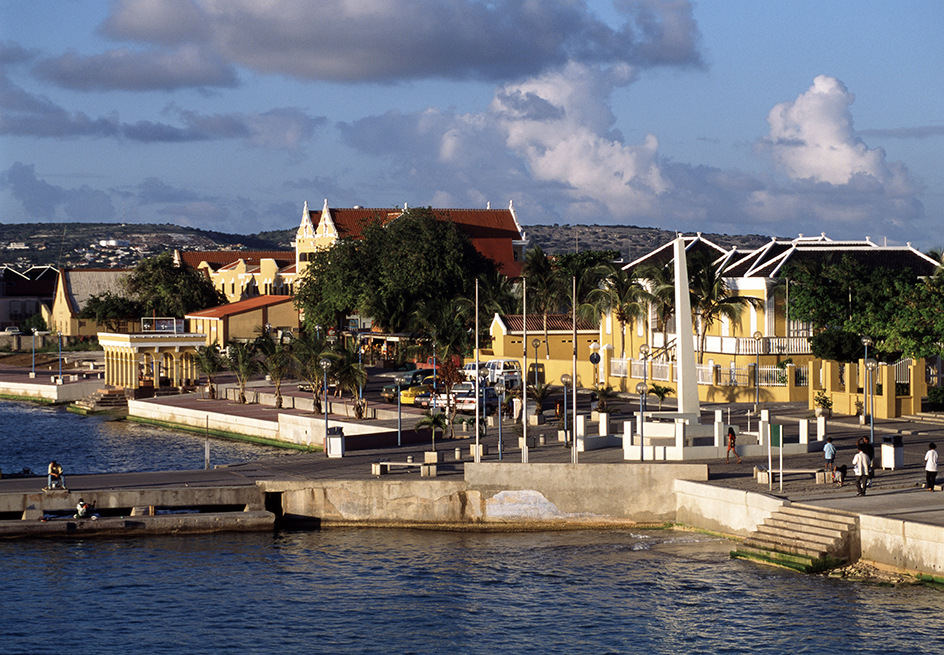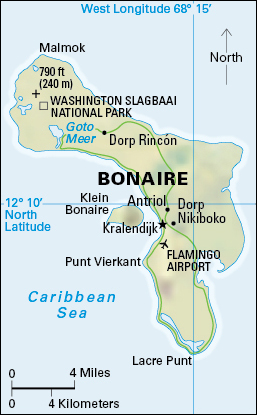Bonaire is an island in the Caribbean Sea that is part of the Lesser Antilles island group. Since 2010, Bonaire has been an overseas municipality of the Kingdom of the Netherlands. Its political status is like that of a Dutch city. Previously, Bonaire was part of the Netherlands Antilles, which was a largely independent part of the Kingdom of the Netherlands. Bonaire lies about 50 miles (80 kilometers) north of Venezuela in the Caribbean Sea. Bonaire and Klein Bonaire, a tiny uninhabited island about half a mile (0.8 kilometer) to the west, have a combined area of 114 square miles (294 square kilometers).

About 25,000 people live in Bonaire. Most of Bonaire’s population lives in and around Kralendijk, the capital. The official language is Dutch, but many people use Papiamento, the local Creole language, as their common language. Many of Bonaire’s people are of mixed descent. Their ancestors include Africans, Europeans, and American Indians. Over half of the population is Roman Catholic. Many retired Dutch people live on Bonaire.

Tourism is the most important economic activity on Bonaire. The island is a center for underwater diving. Because Bonaire has poor soil and a dry climate, there is little agriculture on the island. Salt production and oil shipping contribute to the economy.
Native American Arawak people were the first inhabitants of Bonaire. Spain claimed the island in 1499 and used it to raise cattle and other animals for their hides. In the 1600’s, the Dutch seized Bonaire. They produced salt and established plantations there, using slave labor to support these activities. People may visit the old slave huts. Bonaire later changed ownership several times, until a treaty signed by the United Kingdom and the Netherlands in 1814 resulted in repossession by the Dutch in 1816.
See also Netherlands Antilles .
